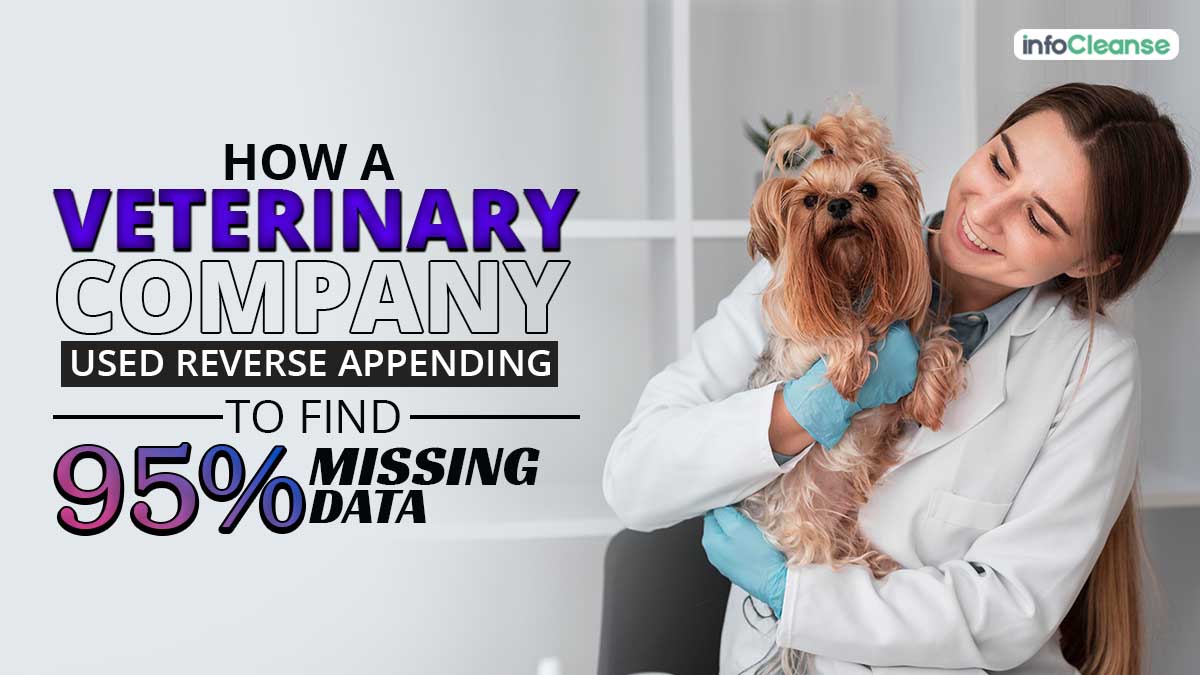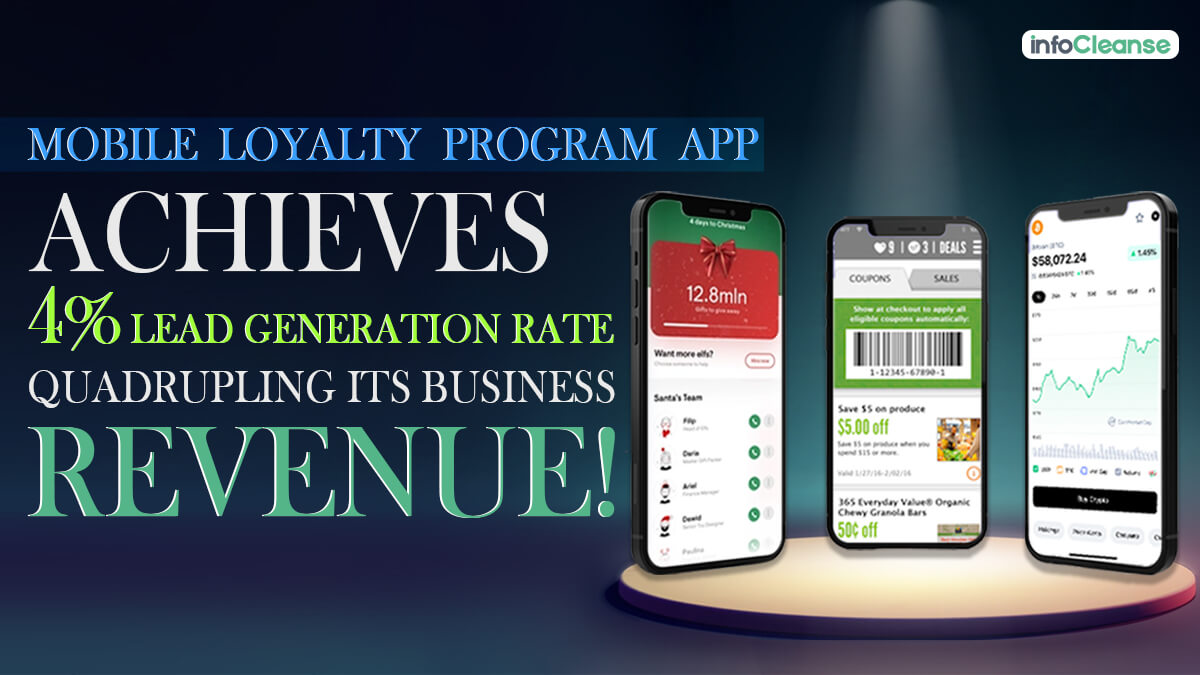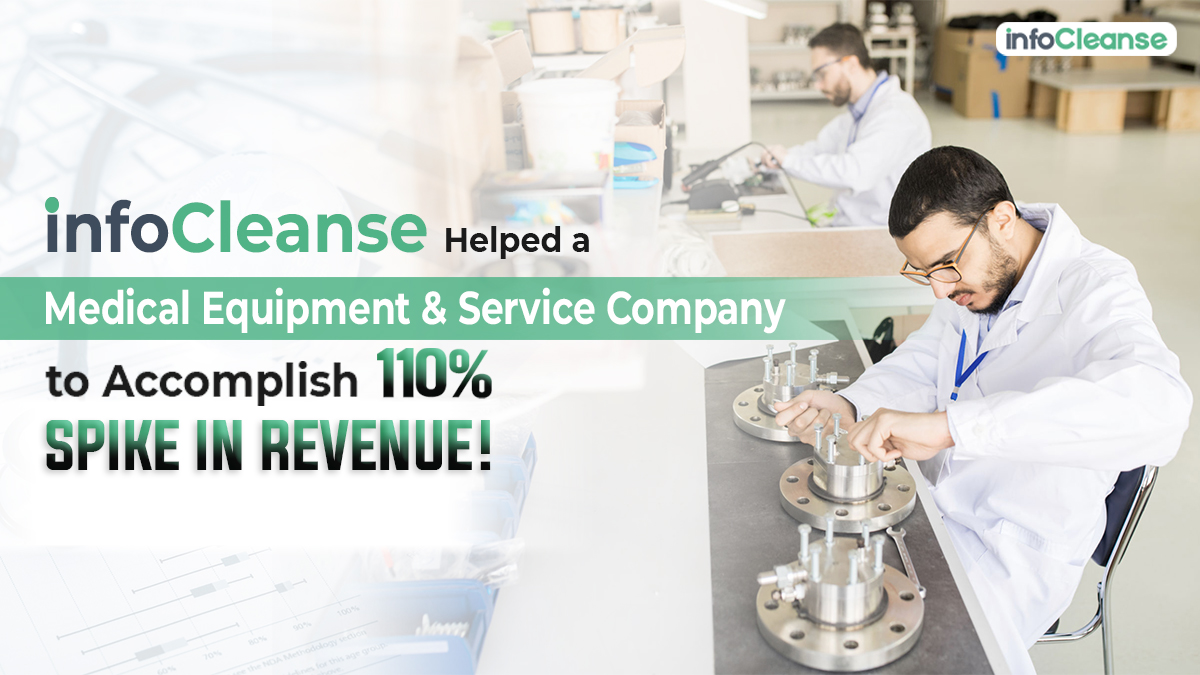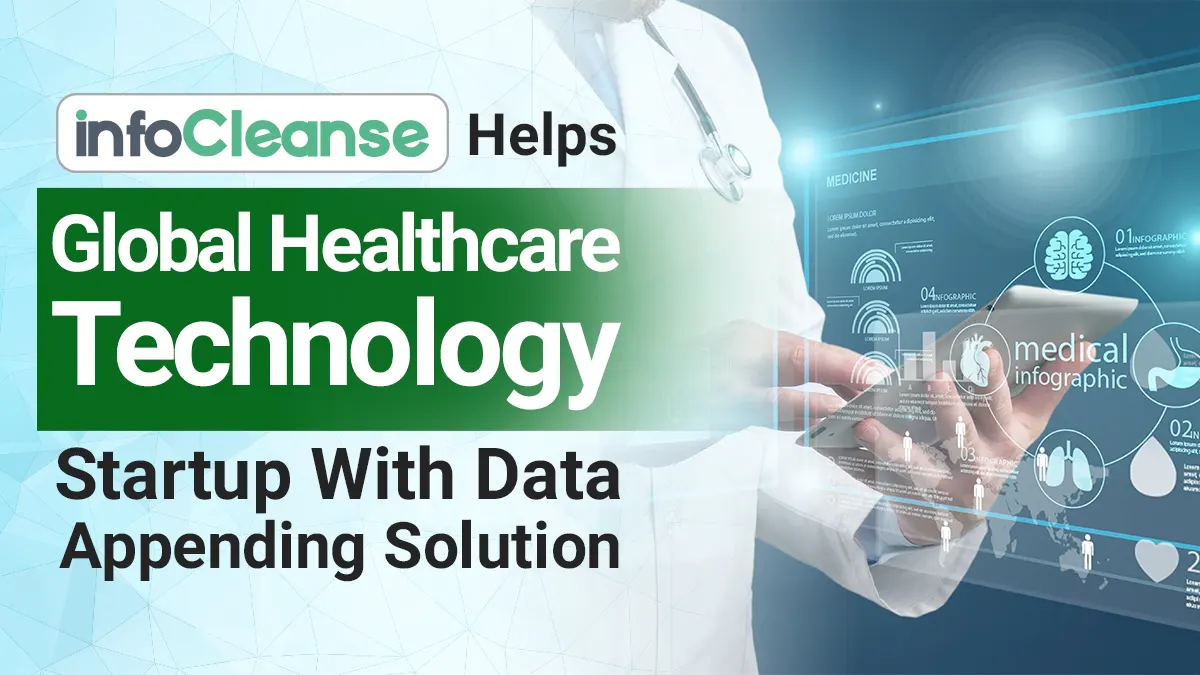What is the first thing that crosses your mind while visualizing a healthcare facility?
The general scenario includes mounds of paperwork, busy healthcare providers working on strict timelines, reporting errors, and inefficiencies. 70% of healthcare professionals spend an average of 10+ hours a week on paperwork and administrative tasks, and 32% invest 20+ hours of their bandwidth. The data is worrisome!
Healthcare systems and their professionals face a massive time crunch, and wasting precious time on such tasks eats away the bandwidth required to cater to the needs of patients. So, the need of the hour is a system or tool the healthcare industry can use to save time and effort. RPA to the rescue!
To begin with, what is RPA?
Robotic Process Automation is a bot or software robot that can automate repetitive tasks to streamline operations and enhance efficiency. As an intelligent tool, RPA in healthcare functions as a boot; it can take up the same tasks that humans do and deliver them rapidly and with no errors. RPA allows healthcare entities to automate many parts of work and focus on their core goal of providing excellent care to users.
Do you know the difference?
RPA: The Need of the Hour for Healthcare
Our social and economic life immensely depends on a well-functioning healthcare system. Shortage of healthcare professionals, high patient volumes due to the incidence of occupational hazards and other diseases, and skyrocketing operating costs have impaired the efficiency of the healthcare system. Vigorously embracing digital transformation is the next big thing for the healthcare industry. While AI and IoMT are at the forefront of this digital transformation, RPA is shouldering a huge responsibility of significantly enhancing patient care and system efficiency and driving innovation. In this blog, let us deep dive and explore the profound impact of RPA on healthcare-its use cases, challenges that can thwart its implementation, and some real-world examples.
The RPA industry is witnessing robust growth, as 50% of healthcare organizations are leveraging some form of RPA for automation. Owing to this, global robotic process automation in healthcare, valued at USD 1.4 billion, is expected to grow exponentially at a CAGR of 26.1% to reach USD 14.18 billion by 2032. As 33% of the tasks in healthcare can be effectively automated, the scope for RPA is growing in leaps and bounds.
RPA in Healthcare: Triggering Efficiency and Bringing Value
Numerous processes in healthcare rely on human intervention and are prone to errors. Such error-prone processes limit productivity and manifest in operational inefficiencies and high operating costs, ultimately affecting the care that a user receives from the healthcare system.
According to a survey from Physicians Weekly, around 25% of users found errors in medical charts. It is where Robotic Process Automation steps in!
Mimicking and going beyond human capabilities, RPA enhances the efficiency, performance, and reliability of a wide range of tasks, which are critical for the functioning of healthcare systems. RPA streamlines processes while keeping inefficiencies at bay, enabling economic growth and benefiting various healthcare industry stakeholders.
A few of the impactful benefits RPA has bestowed on the healthcare industry are as follows:
1. Explore Personalization and Enhance User Care
With RPA, healthcare professionals can ditch repetitive or mundane tasks, let bots handle them, and focus on high-value tasks. RPA in healthcare reduces staff involvement in mundane tasks and frees up their bandwidth, allowing medical professionals to take a personalized approach toward treatment.
For instance, with their hectic work schedule eased out, healthcare professionals can invest time in face-to-face meetings with patients, personally guide them, make them feel valuable, and enhance user experience. Additionally, via a personalized approach using RPA, healthcare enterprises can fast-track user onboarding by eight times, save resources, and gain ROI.
2. Skyrocketing Productivity and High ROI
Adopting RPA in healthcare will profoundly impact productivity, i.e., more activities in less time. With a majority of manual tasks getting automated, healthcare professionals will have immense time to focus on crucial tasks. With RPA working at their behest continuously, taking care of appointment scheduling, tests, and more, the healthcare systems operate faster. Owing to RPA, healthcare entities can witness an upward trend in productivity, i.e., an increase of 86% and, thus, an optimized ROI of 30% to 200%.
3. Increased Accuracy and Effective Decisions
It is alarming that 25% of patients found errors in their medical charts. Such errors can have far-reaching consequences, including impairing the decision-making of healthcare professionals or even hindering the claim settlement process, to name a few. With RPA, this is a problem of the bygone era as it increases accuracy by 90%. RPA follows the exact steps and validations specified in the automation scripts and executes the tasks perfectly, keeping errors at bay. It can handle invalid or missing information and errors by verifying and cross-checking data from multiple sources.
By applying pre-defined rules, RPA can escalate to a specified source, triggering human intervention vital for resolving problems on the go. With RPA taking care of accurate data entry in EHRs and patient records, healthcare professionals will be empowered to make efficient data-backed decisions that benefit patients and users.
4. Robust Compliance Posture and Reduced Risks
A data privacy breach and hefty fines jeopardizing the reputation of a healthcare enterprise is a scenario no one desires. Healthcare organizations must ardently maintain a robust compliance posture to ensure this becomes a reality. It is where RPA comes in handy! RPA eliminates the risk of human errors in data entry, enhancing user information and billing accuracy. By strictly ensuring consistent application of rules and guidelines, RPA obliterates the risk associated with compliance issues. Besides this, by monitoring data privacy, RPA empowers healthcare businesses to overcome legal hassles related to data privacy breaches and secure a compliance accuracy by 92%.
5. Secured Data and Safeguarded Financial Pursuits
RPA regulates users’ access, ensuring that the electronic data healthcare enterprises possess adheres to privacy norms. With RPA quickly detecting and responding to cyber-attacks, organizations can evade data security breaches and secured their financial interests. Additionally, with RPA as their automation tool, healthcare providers can track and document every step of a process for external audits and slice through a complicated data privacy maze.
6. Proactive Interventions and Improved Clinical Outcomes
With the advent of RPA in healthcare, medical professionals in healthcare facilities and other centers can invest their bandwidth into better use. They can invest more time and effort toward patient care, track their recovery, and more. Additionally, RPA enables remote patient monitoring, case management, and treatment coordination, allowing hassle-free tracking of patient health progress. It can provide personalized treatment regimens to patients, send alerts and notifications, and ease processes for healthcare professionals and users seeking care. By accurately analyzing data from various sources, RPA in healthcare can identify high-risk candidates in dire need of proactive intervention, escalate it to the concerned point of contact, and enable quick problem resolution.
7. A High Volume of Tasks and Scalable Operations
RPA can work wonders for healthcare organizations vying to expand their operations without additional costs. Via RPA, healthcare enterprises can scale up automating rule-based repetitive tasks without splurging on extra resources. Therefore, healthcare facilities can save time, effort, and costs and focus on endeavors that positively impact their revenue growth. By reducing processing time by 30-50%, RPA is making improved operational efficiency a reality for several organizations.
8. Minimizing Costs and Increasing Profits
Once put to use, RPA can drastically reduce the costs associated with specific tasks. 61% of enterprises leverage RPA to reduce their expenses from the benefits RPA bestows through automation. They are witnessing a high ROI, i.e., a return of USD 6.74 for every USD 1 invested in RPA for their day-to-day operations. Operating round-the-clock, RPA drives efficiency and reduces manual labor costs by 59%. The healthcare industry could save around $25 billion annually by merely automating administrative tasks. By leveraging RPA, healthcare business entities can have accurate billing processes and reduce claim denials and mistakes that occur due to human errors, ultimately culminating in lower operational costs.
Usage Scenario of RPA in Healthcare
As RPA is incredibly versatile, it can be utilized to automate various tasks humans undertake in the healthcare industry. Given that the healthcare industry is inundated with administrative tasks and manual workflows, it can perform better with the help of RPA. Besides this, acute staff shortages have massively disrupted work processes, necessitating RPA intervention to nudge healthcare toward efficiency.
Here are some use cases of RPA in the healthcare industry:
1. RPA as Digital Assistants for Scheduling Appointments
When tasks are done on a large scale, they are prone to errors, which applies to appointment scheduling in the healthcare industry. RPA bots can act as digital assistants, automate a large chunk of tasks, and facilitate appointment scheduling. For instance, RPA bots can consider a healthcare professional’s availability and a patient’s choice of time and provide a time slot that suits both. It can estimate appointment duration and even notify both the patient and healthcare professional in case of any change, eliminating any scope of ambiguity and inconvenience.
2. RPA for Easing Out Tedious Eligibility Verification
Increased patient volume helps healthcare organizations boost their revenue margins, but with it comes the labor-intensive woe of verifying their eligibility for insurance claims. However, with RPA, this becomes a hassle-free process for healthcare enterprises. RPA streamlines tedious, rule-based tasks by extracting user data from repositories and CRM or EHRs. It enables healthcare executives to arrive at data-backed decisions swiftly. It can also send automated emails to users to verify their coverage and benefits, helping healthcare executives to fast-track the claims process.
3. RPA for Better Care and Improved User Satisfaction
Ensuring that the users adhere to prescription regimens for a quick recovery is a daunting task for healthcare providers. RPA can send reminders to users on prescription filling via notifications or emails and ensure effective post-discharge management for good recovery. Such a personalized approach, which RPA provides, allows healthcare organizations to provide better care to users and enhance customer satisfaction, fostering a long-lasting bond with the users.
4. RPA for Timely Data Corrections and Compliance Adherence
RPA bots help healthcare enterprises overcome data inaccuracies and adhere to compliance norms. RPA can extract information from documents create copies of data and store it in a repository, allowing organizations to adhere to HIPAA data backup requirements. By flagging duplicate or inaccurate data, RPA will enable organizations to be well-equipped to navigate through compliance audits.
5. RPA for Quick Check-ins Through Self-service Kiosks
Healthcare facilities derive the best benefits by employing RPA for self-service kiosk check-ins. RPAs can capture user information as they punch in their details in self-service kiosks and transmit it to user or patient registration software, automating the registration process. Such RPA–powered service check –kiosks come in handy when a healthcare organization has to perform a triage to prioritize treatments based on severity.
6. RPA for Streamlined Data Integration and Accurate Diagnosis
Manual data transfers between departments and applications in a healthcare enterprise leave massive room for errors and breaches. RPA automatically extracts results from laboratory management systems and inducts them into any other software accurately, without data breaches. RPA can keep patient or user records updated, sync their medical histories and lab reports, and empower healthcare professionals to make accurate diagnoses.
7. RPA for Managing Healthcare Staff Workload Efficiently
With an acute workforce shortage, optimizing human resources via RPA is crucial for the survival of healthcare organizations. RPA synchronizes data across all staff-related systems in a healthcare enterprise, assesses their performance, identifies talent gaps, manages workloads, and ensures timely wages.
8. RPA for Error-free Billing and Faster Payments
Even trivial errors in user records or patient discharge and treatment summaries can affect the billing and insurance claims process, and payment recovery creates a dent in the enterprise’s ROI. As RPA can collate information on various data types, including prescription information and disease codes, from user records, healthcare providers can successfully accelerate the billing process, claim settlement, and avoid errors.
9. RPA for Ending Conundrum and Tracking Assets
A conundrum ensues whenever equipment is misplaced or an inventory stock is exhausted in a healthcare facility. Besides the conundrum, it delays and obstructs treatment and workflow processes. By combining digital sensors and RPA, healthcare facilities can track and manage inventory stock. Personnel needing equipment or an inventory can request via a web portal; RPA checks the availability of the assets or medicine across storage facilities. RPA tracks the asset and notifies the point of contact to issue it to the concerned staff.
Healthcare Enterprises Tapping Into the RPA Potential for Making Efficiency a Habit
Check out the top players in the healthcare industry, harnessing the potential of RPA for enhancing user care, streamlining supply chain endeavors, managing inventory, and driving innovation for revolutionizing healthcare.
1. University Hospitals Birmingham’s Self-service Kiosks
A UK’s primary healthcare service provider, University Hospitals Birmingham, is making the most of RPA to eliminate queues, ensure quick check-ins, enhance user experience, and manage sizeable patient inflow. With an RPA integrated into its patient administration system, UHB’s self-service kiosks enable users to complete self-registration swiftly, lessening the burden on the administration task by 50%.
2. GE Healthcare’s Optimized Revenue Cycle Management
The American multinational medical technology company GE Healthcare, the numero uno provider and manufacturer of diagnostic imaging agents and radiopharmaceuticals has vigorously embraced RPA. With RPA by its side, GE has streamlined procedures for reimbursement, optimized claim process management, and decreased billing errors to improve its revenue cycle management.
3. McKesson’s Streamlines Supply Chain Endeavors
An American company, McKesson Corporation, which delivers a third of all pharmaceuticals used in North America, is achieving its business objectives with RPA. It is tapping into the potential of RPA to manage inventories and streamline its supply chain endeavors. Owing to RPA, it has reduced its manual errors, optimized its inventory precision, and ensured quick TAT through timely deliveries of medical supplies to its clientele.
4. US Acute Care Solutions Scales its Operations
An American-based healthcare service provider, US Acute Care Solutions is saving time spent on 100,000+ hours’ worth of work each year. It has put RPA into use to process around 20 million medical records to create coherent cohorts of medical history on each user for billing purposes. It was able to scale its operations achieve process excellence without hiring additional staff owing to RPA.
Stumbling blocks for RPA in Healthcare: The challenges
By embracing RPA with great zeal, several healthcare enterprises are reaching the pinnacle of success. However, though RPA can enable enterprises to achieve the best outcomes, it comes with its own set of flaws that need to be addressed. Owing to this, a staggering 30 to 50% of RPA projects fail to make a mark. Here are a few barriers obstructing organizations from reaping the benefits of RPA.
1. Rigid Compliance Framework
The healthcare industry is riddled with strict rules and regulations to safeguard the security and privacy of user data. Such burdensome regulatory frameworks create a rigid barrier for healthcare organizations to implement RPA. Opting for data encryption and taking into consideration HIPAA (Health Insurance Portability and Accountability Act) and PCI DSS (Payment Card Industry Data Security Standards) norms will allow healthcare enterprises to stay clear of compliance issues and implement RPA.
2. Resistance to Change
As RPA can disrupt current workflows, the healthcare workforce in an organization resists it. Besides this, around 41% of organizations lack an effective strategy for automation, making RPA implementation a daunting task. Hence, comprehensive training for healthcare professionals is necessary for healthcare organizations considering implementing RPA for operational efficiency.
3. Cumbersome Integration
The incumbent IT infrastructure that operates on an outdated software program hinders the implementation of RPA and the data exchange required for automation. Transitioning from obsolete software to middleware technologies and APIs will enable healthcare enterprises to be well-prepared for RPA.
4. Tackling Growing User Volumes
There is a constant influx of users in the healthcare system. Owing to this, healthcare businesses proliferate, making managing growing volumes of users difficult for RPA. Dedicating personnel to maintain and update RPA bots regularly allows healthcare enterprises to overcome this scalability challenge.
Future Trends of RPA in Healthcare
RPA in healthcare is ushering in a new wave of efficiency. However, its potential is exhaustive!
Here is a glimpse of future trends of RPA in healthcare:
- Learning and adapting RPA bots created with deeper AI integration
- RPAs with built-in features like encryption, access control for adherence to data compliance
- Advent of Cloud-based RPA for scalability and flexibility
Wrapping Up
With healthcare industry stakeholders bracing themselves for the massive revolution RPA is set to bring, RPA players can leverage data repositories to reach out to them and effectively market their solutions. The lucrative potential of RPA for the healthcare industry is immense. From improving operational efficiency, reducing costs, enhancing user care, increasing ROI, and more, RPA ticks all the boxes for healthcare enterprises striving to succeed. Though RPA is not devoid of challenges for healthcare, the benefits outweigh them. With the right strategy in place, they can implement RPA and gain the loftiest benefits of this technology.









































